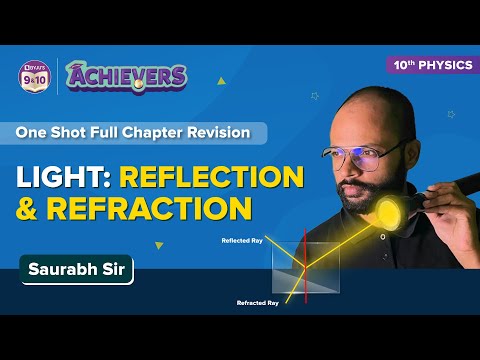We can see that the different types of mirrors are used in a variety of ways in our day-to-day lives, from a looking glass to a road safety mirror. In this article, we will explore the definition, types and working of mirrors.
|
Table of Contents: |
What Is a Mirror?
In order to understand the concept of a mirror, one must know what is the phenomenon behind the mirror and what makes it a reflecting material. A mirror is defined as a reflecting surface and can be explained by the law of reflection, which states that when a ray of light is made to fall on the reflecting surface, the incident ray, the reflected ray and the normal to the surface of the mirror all lie in the same plane and the angle of incidence is equal to the angle of reflection.
Terms Related to Mirrors
- Incident ray: It is defined as a ray of light that hits the surface.
- Reflected ray: It is defined as the ray of light that is reflected back after hitting the surface.
- Normal ray: It is defined as the ray that is 90° to the surface or the ray which is perpendicular to the reflecting surface.
- Refracted ray: It is defined as the incident ray which passes through a second medium resulting in the change of direction.
- Angle of incidence: It is defined as the angle between the incident ray and the normal at which the incidence occurs.
- Angle of reflection: It is defined as the angle between the reflected ray with respect to the normal at which the reflection occurs.
- Angle of refraction: It is defined as the angle between the refracted ray and the normal at which the refraction occurs.
Types of Mirrors
Following are the types of mirrors that are most widely used:
Plane mirror:
The images formed from a plane mirror are the reflected images in their normal proportions but reversed from left to right. These are the most widely used mirrors.
Read More: Plane Mirror
Convex mirror:
These are the spherical mirrors that are curved outward and the image obtained is virtual, diminished and erect for a real object.
Concave mirrors:
These are the spherical mirrors that are curved inward and the image obtained from these mirrors depends on the placement of the object.
Following is the table explaining the images obtained based on their placement:
| Placement of the object | Image obtained |
| Placed at infinity | Highly diminished, real and inverted |
| Placed beyond the centre of curvature | Diminished, real and inverted |
| Placed at the centre of curvature | Same size as that of the object, real and inverted |
| Placed between the centre of curvature and principal of focus | Enlarged, real and inverted |
| Placed at principal focus | Highly enlarged, real and inverted |
| Placed between the principal of focus and the pole | Image is obtained behind the mirror, highly enlarged, virtual and erect |
How Does a Mirror Work?
We know that when a light ray falls on the reflecting surface, it gets reflected. We also know that light is energy and energy can either be reflected or absorbed. Here, mirrors reflect light energy.
The reason why only mirrors are reflective and not the other flat white surface is because the mirror is smooth at a microscopic level. When the light energy hits the rough surface, the light bounces back in all directions and this is known as diffuse reflection. But for a smooth surface, the bouncing back of light happens in one direction and is known as specular reflection.
You may also want to check out the topics given below!
- Mirror Formula For Spherical Mirrors
- Spherical Mirror: Concave And Convex Mirror
- Reflection Of Light In A Mirror: Lateral Inversion
Watch the video to understand the differences between concave mirrors and convex mirrors.

Frequently Asked Questions – FAQs
What are concave mirrors?
What are convex mirrors?
What is a mirror?
Define the Refracted ray.
Define the Reflected ray.
Watch the video and revise all the important concepts in the chapter Light Reflection and Refraction Class 10

Stay tuned to BYJU’S and Fall in Love with Learning!

Put your understanding of this concept to test by answering a few MCQs. Click ‘Start Quiz’ to begin!
Select the correct answer and click on the “Finish” button
Check your score and answers at the end of the quiz
Congrats!
Visit BYJU’S for all Physics related queries and study materials
Your result is as below
Request OTP on
Comments